Gone Girl Blu-ray Movie
HomeGone Girl Blu-ray Movie 
Blu-ray + UV Digital Copy20th Century Fox | 2014 | 149 min | Rated R | Jan 13, 2015
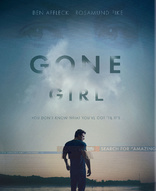
Movie rating
8.3 | / 10 |
Blu-ray rating
| Users | 4.4 | |
| Reviewer | 4.5 | |
| Overall | 4.4 |
Overview
Gone Girl (2014)
With his wife's disappearance having become the focus of an intense media circus, a man sees the spotlight turned on him when it's suspected that he may not be innocent.
Starring: Ben Affleck, Rosamund Pike, Neil Patrick Harris, Tyler Perry, Carrie CoonDirector: David Fincher
| Drama | 100% |
| Psychological thriller | 68% |
| Crime | 65% |
| Mystery | 46% |
| Thriller | 15% |
Specifications
Video
Video codec: MPEG-4 AVC
Video resolution: 1080p
Aspect ratio: 2.40:1
Original aspect ratio: 2.39:1
Audio
English: DTS-HD Master Audio 7.1 (48kHz, 24-bit)
Spanish: Dolby Digital 5.1 (448 kbps)
French: Dolby Digital 5.1 (448 kbps)
Portuguese: Dolby Digital 5.1
Czech: Dolby Digital 5.1
Polish: Dolby Digital 5.1
Turkish: Dolby Digital 5.1
Subtitles
English SDH, Portuguese, Spanish, Czech, Polish, Slovak, Turkish
Discs
50GB Blu-ray Disc
Single disc (1 BD)
UV digital copy
Playback
Region free
Review
Rating summary
| Movie | 4.5 | |
| Video | 5.0 | |
| Audio | 4.5 | |
| Extras | 2.0 | |
| Overall | 4.5 |
Gone Girl Blu-ray Movie Review
The Last 5 Years.
Reviewed by Jeffrey Kauffman January 10, 2015In a former life my wife was a news anchor and once had the opportunity to chat with a local police chief during the investigation of the murder of a young wife, a killing which was ultimately pinned on the husband, a man who had apparently just kind of hung around after the crime without trying to get the heck out of Dodge. My wife indicated her incredulity at the husband’s lack of planning, offering, “If I killed my husband, I’d be on the next plane to Acapulco.” To which the kindly police chief responded, “And we’d be looking all the harder for you, since the spouse is always the first suspect.” That kind of bizarre assumption of guilt until innocence is proven has haunted several people who have claimed through the years to be innocent in the deaths of their husbands or wives, and some like ex-Green Beret Jeffrey MacDonald have seen their cases become causes célèbres, spawning books and television movies and entering the public lexicon in sometimes unexpectedly visceral ways. There have been a number of high profile “disappearances” which ultimately ended in spouses being accused of murder, with the case of Scott Peterson of Modesto, California, being one of the more notable, one that is still etched on the minds of people who find it inconceivable that an apparently well adjusted and “normal” man could savagely kill his very pregnant wife. All of these famous (some may say infamous) cases provide a bit of contextual backstory for the intriguing Gone Girl, a film which plays upon preconceptions in an almost ruthlessly sly way. It’s a bit hard to adequately discuss Gone Girl without at least hinting at some of the twists and turns both Gillian Flynn’s original novel and her own adapted screenplay take, and so those not familiar with the story might want to stop right here, though I will endeavor not to provide any out and out spoilers. That said, there’s little question that Flynn rather ingeniously toys with her readers, and by default her viewers, in presenting a story that is intentionally bifurcated between a supposedly objective narrative and a more subjective exploration of a wife’s personal experiences courtesy of a journal she’s keeping, but it’s part of Gone Girl’s structural scheme that everything is not exactly as it might seem at first glance. Gone Girl has tended to anger some readers, frankly mostly female, who felt Flynn’s denouement was a slap in the face to years of struggle for equal rights, and even Flynn has suggested she had a moment of remorse shortly after the novel appeared, fearing she had (in her own words) “killed feminism.” But putting aside any subtext like that, at least for a moment, Gone Girl is a thrillingly discursive take on an age old story, one that moves at a deliberate but inexorable pace toward a rather unsettling conclusion.
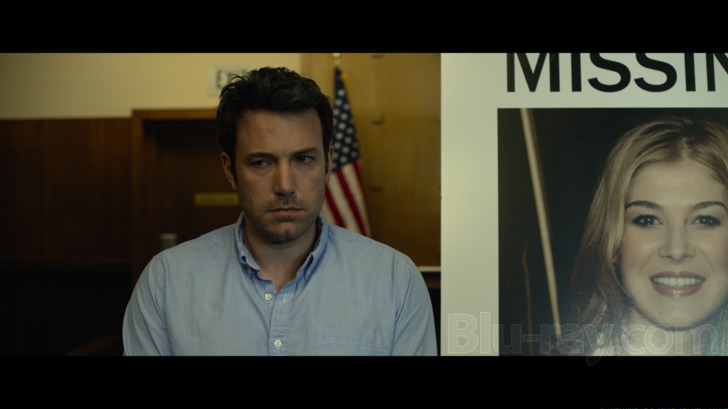
There are layers of misdirection abounding in Gone Girl, and one of the film’s major achievements is its reproduction of the ping ponging structure of the original novel, something that many readers probably thought would be well nigh impossible in a cinematic adaptation. The main thrust of the story involves the mysterious disappearance of Amy Elliott-Dunne (Rosamund Pike, already SAG and Golden Globe nominated for this role, and widely believed to be a shoo in for an Oscar nomination when those are announced next week). Amy and her husband Nick (Ben Affleck) had been experiencing various woes, as is slowly detailed in the film’s opening act courtesy of both narrative elements as well as anecdotal vignettes culled from Amy’s journal (some of which are offered as voiceovers by Amy). The economic upheaval of the past several years has wreaked havoc with the Dunnes, forcing them to leave New York for the decidedly less glamorous climes of Missouri, where Nick has family.
Financial struggles are only part of the trauma afflicting the couple, for in the wake of Amy’s disappearance (on the couple’s fifth wedding anniversary), it’s soon detailed that Nick has been engaging in an extramarital affair with a young woman named Andie Fitzgerald (Emily Ratajkowski). The detective assigned to the case is named Rhonda Boney (Kim Dickens), a straightforward type who nonetheless seems sympathetic to Nick’s plight even as suspicions begin to mount that he’s done Amy in for reasons that are not initially clear. Nick’s own social clumsiness adds fuel to the fire, and soon he’s been more or less convicted of murder before any actual charges are filed or any body has been found.
Roughly the first half to two thirds of the film tends to fall into rather well worn thriller ruts, with a procedural angle added as Boney starts collecting scraps of information and what seem to be important clues as to what has happened to Amy. Director David Fincher, a master at keeping his cinematic cards about as close to his vest as is humanly possible, wends a circuitous path through little data bits that seem to be pointing in one direction, but which ultimately prove to be something else entirely. There’s a provocative contrivance at the core of Gone Girl which won’t be spoiled here, but which in fact may tend to delight and/or annoy in about equal measure, depending on one’s tolerance for being willfully misled.
A lot has been written about the “big twist” in Gone Girl, but it won’t really be detailed here in any overt way to prevent spoilage (those adept at reading between the lines are again urged to skip the rest of this review if they haven't read the book or seen the film). Instead, what tends to interest me more is how the film flips back on itself after the twist, in a kind of intentionally ironic self-reflexive revisionism that plays almost like a bizarro world version of Rashômon, in that it’s another version of the same story by one character whose previous version has already been told. However, despite the structural ingenuity of Flynn’s work, there’s no denying that the film tips over into a kind of turgid B-movie sensibility at this point, with an increasingly contrived series of events that may play like gangbusters but which tend to divorce the film from its generally realistic tone in the early going.
Fincher guides the proceedings in his typically adroit if somewhat aloof manner, never getting so close to the proceedings that Nick’s increasing isolation becomes too unbearable to watch. A large and at times rather colorful supporting cast fills in some of the nooks and crannies of the film, with Missi Pyle doing great work as a Nancy Grace-esque harridan and (I swear this is not a sign of me having completely lost my marbles) Tyler Perry doing extremely good work as the aggressive attorney Nick hires to help get him through the gauntlet of press scrutiny and ultimate arrest.
For all the ingenious artifice of Gone Girl, at its core the story is actually fairly tawdry and ultimately probably disturbing more due to the realization that Nick has jumped out of the frying pan and directly into the fire (so to speak) than to any inherent peccadilloes of either of the main couple that are put on display. The film plays with the lyric to Joni Mitchell’s iconic song Big Yellow Taxi, with the disc’s slipcase emblazoned with a fading piece of that lyric, “You don’t know what you’ve got 'til it’s. . .” I might suggest another lyric from a musical about to make it to wide release in cineplexes, Jason Robert Brown’s The Last 5 Years (perhaps especially appropriate given the fact that Amy's disappearance coincides with the couple's fifth anniversary). To quote the opening song from that show, the film’s denouement may seem to offer a glimmer of hope for Nick, but it’s manifestly obvious he’s Still Hurting.
(Note: If my wife is ever found in Acapulco at about the same time that I've mysteriously vanished, she did it.)
Gone Girl Blu-ray Movie, Video Quality 

Gone Girl is presented on Blu-ray courtesy of 20th Century Fox Home Entertainment with an AVC encoded 1080p transfer in 2.40:1. The IMDb lists this as having been digitally shot with the Red Epic Dragon, with a 6K source format transferred to a 4K DI. The results are spectacular, at least when a certain slack is granted for the overall dark and shadowy ambience, not to mention ubiquitous color grading, of much of the film. If Orange Is the New Black, Gone Girl might augur yellow as the new blue for thrillers, for a lot of the film is bathed in a frankly kind of sickly looking jaundiced color. Rather surprisingly, detail and fine detail remain largely undisturbed by this gambit, and with an equally surprising lack of crush, even dimly lit scenes with the yellow appended have excellent to exceptional amounts of detail. Fincher and his go to DP Jeff Cronenweth play with light and shadow in a kind of quasi-noir way throughout at least the first half or so of the picture, bathing backgrounds in deep, lustrous blacks and even carrying over the shadows onto at least parts of foreground objects. Once the film gets into its "endgame," there's a more naturalistic lighting scheme employed which finally allows the palette to pop with a bit more vividness. Despite running around two and a half hours, the film is comfortably seated on a BD-50 with no supplements other than Fincher's commentary, allowing plenty of breathing room for a problem free presentation.
Gone Girl Blu-ray Movie, Audio Quality 
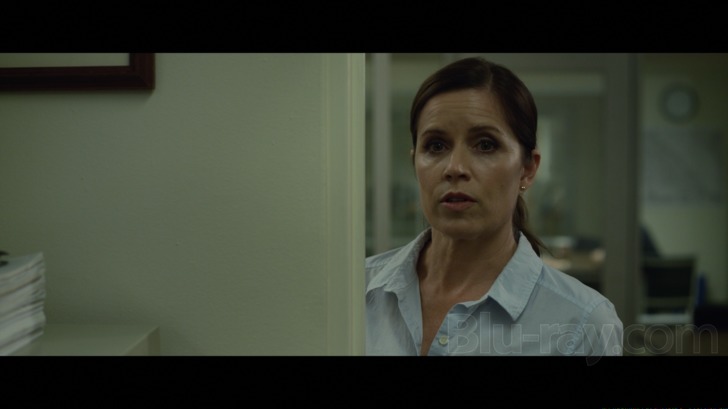
The sound design of Gone Girl is fairly subtle, and so the inclusion of a lossless DTS-HD Master Audio 7.1 track might seem to be a bit hyperbolic, though there's appealing depth to the pulsing, minimalist score by Trent Reznor and Atticus Ross that makes full use of the expanded soundstage. Discrete channelization is also utilized for ambient environmental effects and other moments that have large groups of people assembled. Amy's narration is placed squarely on top of the prioritization (along with Nick's less frequent voice overs). Dialogue rings clearly throughout the film, and while not overtly flashy in any real way, the mix here is nuanced and extremely involving, with excellent fidelity and no issues of any kind to report.
Gone Girl Blu-ray Movie, Special Features and Extras 
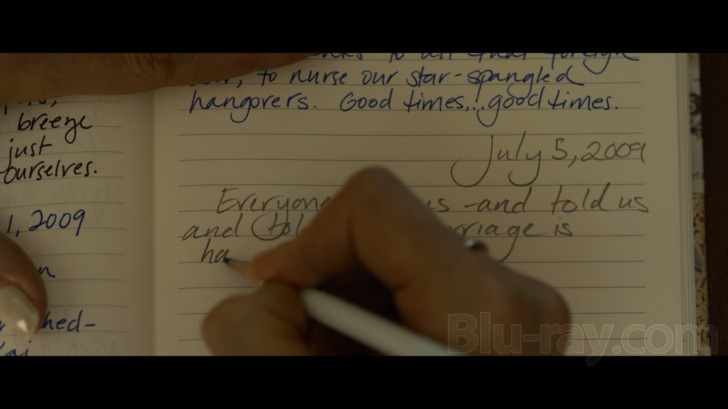
- Audio Commentary. The only on disc supplement is an unexpectedly funny commentary from director David Fincher, who starts out disparaging the Regency Films logo and then moves on to joking about Gillian Flynn not sharing some salient information with him while they were location scouting. Fincher provides the requisite amount of information about the shoot, but this is less technical and more anecdotal in nature.
Gone Girl Blu-ray Movie, Overall Score and Recommendation 
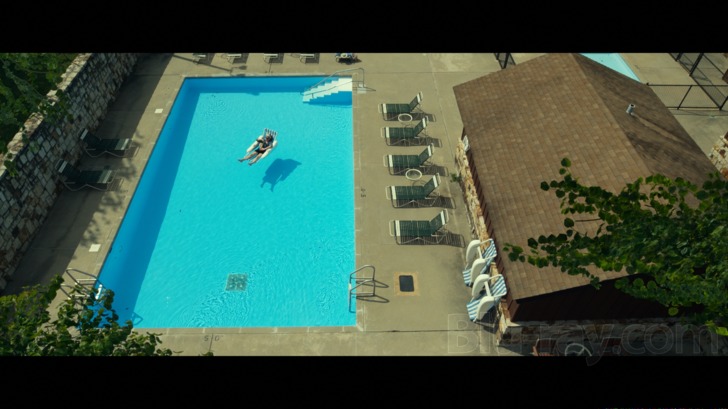
There have been complaints that Gone Girl is too willfully contrived for its own good (in both its novel and film forms), and that the film is simply too slow to ever build up much suspense. Those might be salient criticisms, but they're counterbalanced by Fincher's unerring sense of mood and character. Things may not move very quickly in this film, but the pieces are set in place very deliberately, at least part of which can be attributed to Flynn's rather smart reimagining of her work for a new medium. While the plot may raise some hackles, what ultimately carries this film is a set of unique and finely tuned performances. Affleck manages to convey both helplessness and a kind of incipient rage as the accused, and Pike manages the precarious zigzag of Amy's arc with appealing finesse and an unexpected amount of subtlety. Technical merits are first rate, and while the supplemental package is light, the Fincher commentary is a lot of fun. Highly recommended.
Similar titles
Similar titles you might also like

The Girl with the Dragon Tattoo
2011

Zodiac
2-Disc Director's Cut
2007

True Detective: Night Country
2024

Insomnia
2002

Gone Baby Gone
2007

A Kind of Murder
2016

The Girl on the Train
2016

Memento
2000

The Drop
2014

Prisoners
2013

State of Play
2009

Mystic River
2003

In the Electric Mist
2008

The Usual Suspects 4K
1995

L.A. Confidential
1997

Arbitrage
2012

The Black Dahlia
2006

Klute
1971

Righteous Kill
2008

Red Riding: The Year of Our Lord 1983
2009

